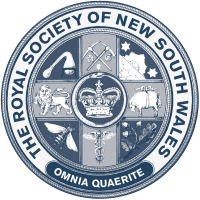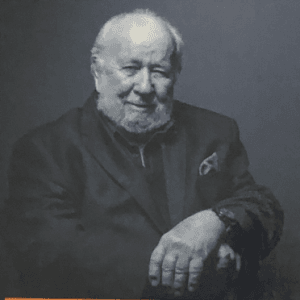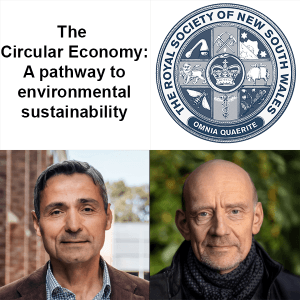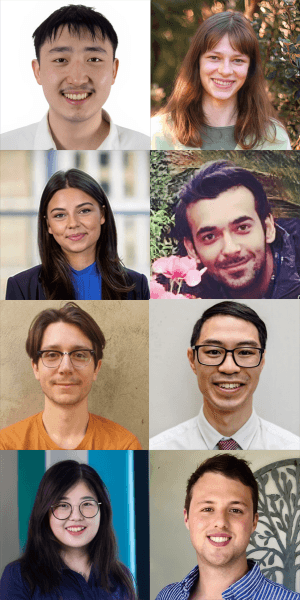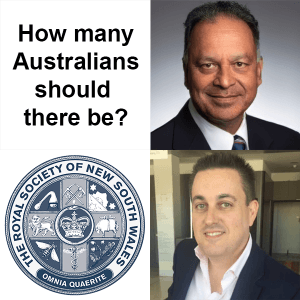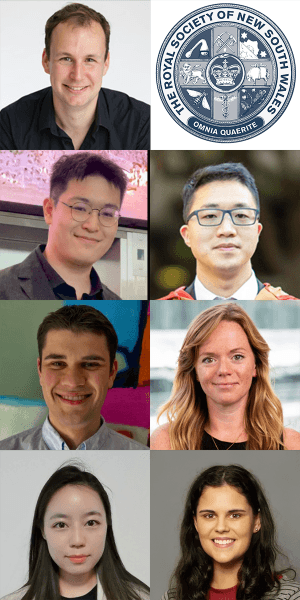
 Royal Society of New South Wales
Royal Society of New South Wales
2024 Postgraduate Student and
Early Career Researcher
Award Presentations
Mr David Sweeney, University of Sydney
Mr Muyang Li, University of Sydney
Mr Joel Sved, University of Sydney
Ms Linqing Tian, UNSW Sydney
Dr Fei Deng, UNSW Sydney
Dr Jennifer Matthews, University of Technology Sydney
Dr Cynthia Turnbull, Australian National University
Date: Wednesday, 5 March 2025, 6.00 — 8.30 pm AEDT
Venue: University of Technology Sydney, UTS Central (Building 2) Foyer, Cnr Jones Street and Broadway, Ultimo, NSW
Entry: No charge
Video presentation: YouTube video
All are welcome
The evening’s program comprises seven short talks presented by PhD research candidates who have been awarded the Society’s Jak Kelly Award and Royal Society of NSW Bicentennial Scholarships for 2024, and early career researchers who have been awarded Royal Society of NSW Early Career Research Citations. Mr Robyn Williams AO FRSN FAA of the ABC Science Show will chair the presentation of awards and will conduct a discussion with each of the postgraduate students and ECR speakers.
The evening is being generously hosted by the University of Technology Sydney in its newest building, UTS Central, on the corner of Jones Street and Broadway in Ultimo.
Please follow the links below to read a summary of each presentation and a brief biography of the presenter.
Mr David Sweeney (Jak Kelly Award) — Finding the Galactic Underworld: the hunt for stellar corpses
Mr Muyang Li (Scholarship Winner) — Measuring and correcting instance-dependent error in semi-supervised learning
Mr Joel Sved (Scholarship Winner) — Machine Learning Assisted Optimisation of Integrated Silicon Photonic Circuits
Ms Linqing Tian (Scholarship Winner) — Nanoparticles and Drug Discovery
Dr Fei Deng (Early Career Researcher Citation) — Advances in CRISPR-based Diagnostics
Dr Jennifer Matthews (Early Career Researcher Citation) — The Coral Diet: symbiosis, supplements, and survival
Dr Cynthia Turnbull (Early Career Researcher Citation) — Modifying the immune system one protein at a time
Presentation Summaries and Brief Biographies of the Presenters
 Finding the Galactic Underworld: The hunt for stellar corpses
Finding the Galactic Underworld: The hunt for stellar corpses
David Sweeney
PhD Student, University of Sydney
Massive stars end their lives is fiery supernova, leaving behind neutron stars (NSs) and black holes (BHs). These compact remnants of dead stars – the Galactic Underworld – exhibit a fundamentally different distribution and structure to the visible Galaxy. This talk presents a simulated distribution of NSs and BHs which is significantly less concentrated into a thin disk, with a height more than triple that of the visible Galaxy. The differences primarily arise from two effects. Firstly, the distribution of remnants inherits structure from the changing distribution of their parent stars over cosmic time. Secondly, an even larger effect arises from the natal kick received by the remnants during their supernova explosions. We find that almost a third of remnants acquire sufficient kinetic energy to entirely escape the Galaxy, leading to a small Galactic mass loss. The BH–NS fraction increases near the Galactic centre: a consequence of smaller kick velocities expected for the former. In the solar neighbourhood, our nearest NS and BH are likely 62 and 68 light years away.
Mr David Sweeney is a PhD candidate in the Sydney Institute of Astronomy whose research is focused on the galactic underworld in which massive stars end their lives in fiery supernova, leaving behind neutron stars (NSs) and black holes (BHs). These compact remnants of dead stars – the Galactic Underworld – exhibit a fundamentally different distribution and structure to the visible galaxy. He is highlighting the exciting paths forward. For the first time in human history, uncovering the population of BHs is within reach. David suggests that within the next 10 years, dozens of isolated BHs will be found, increasing exponentially into the future.
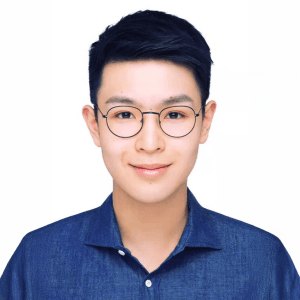 Are AI models smart enough to teach themselves: Measuring and correcting instance-dependent error in semi-supervised learning
Are AI models smart enough to teach themselves: Measuring and correcting instance-dependent error in semi-supervised learning
Muyang Li
PhD Candidate, University of Sydney
In this talk, I will focus on a key sub-domain of Machine Learning known as Semi-supervised Learning (or self-training), which offers a more annotation-efficient alternative to fully-supervised methods. I will begin by reviewing essential concepts and setups in Semi-supervised Learning, highlighting its unique advantages and the reasons for its growing importance. Next, I will delve into one of the major challenges in Semi-supervised Learning: designing confidence thresholds to filter out less reliable predictions. I will discuss how current research tackles this issue, exploring various approaches to define and refine these thresholds. Finally, I will present our recent work, which addresses this problem from a fresh perspective. We model the instance-specific errors made by the model and then use this information to adjust the loss function and compute instance-dependent thresholds. By leveraging each example’s unique characteristics rather than relying on hard, population-level or category-level thresholds, our method provides greater flexibility and reduces bias, which ultimately contributes to advancing the reliability and fairness of Semi-supervised Learning.
Mr Muyang Li is currently a second-year PhD student at the University of Sydney and the Sydney AI Centre. He joined the PhD program following the completion of his BSc (Hons) with first-class honours at the same institution, and a BSc at the University of Auckland. Muyang’s research concentrates on improving machine learning models under weak supervision. His recent research showcases how to design instance-dependent thresholds for Semi-supervised Learning, which offers flexible and robust data-selection methodology, and paves the way for reliable machine learning algorithms with high annotation efficiency. Muyang has published nine peer-reviewed articles in leading conferences and journals. His work has been recognised through several honours, including the Google Award for best poster in AI/ML from the University of Sydney and Google, the outstanding reviewer award from ICLR 2024, and the finalist in the renowned Data Science PhD fellowship from Bloomberg.
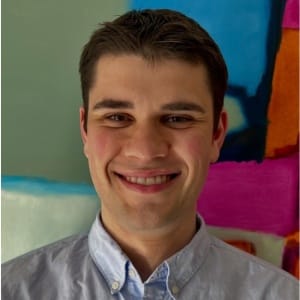 Machine Learning Assisted Optimisation of Integrated Silicon Photonic Circuits
Machine Learning Assisted Optimisation of Integrated Silicon Photonic Circuits
Joel Sved
PhD Candidate, University of Sydney
Integrated silicon photonics has emerged as a transformative platform that transcends traditional electronic interconnects and helps tackle the scaling limitations imposed by Moore’s Law. By leveraging light for data transmission, photonics overcomes the inherent bandwidth and energy constraints of conventional electronics and yields greater component density to meet the increasing demands of modern computing and data centres. Fabrication imperfections and ambient temperature variations, however, play a larger role in the degradation of device performance as they shrink to the nanoscale. To address these issues, machine learning-assisted optimisation enables designers to embed this information into the design and control process, yielding greater device flexibility and robustness. An example of beam-steering and control of solid-state optical phased arrays for applications in LiDAR and communications is presented to demonstrate this principle.
Mr Joel Sved is a second-year PhD student in the School of Electrical and Computer Engineering at the University of Sydney, having previously completed a BE (Hons 1) in 2022, also at the University of Sydney. His PhD studies are in the field of photonics, with a thesis titled ‘On-chip Neural Networks based on Integrated Photonics’. His scholarship has been awarded on the basis of his paper, J. Sved, S. Song, Y. Chen, L. Zhou, R. Minasian, and X. Yi, Machine Learning Assisted Two-Dimensional Beam-Steering for Integrated Optical Phased Arrays (Optics Communications, 540, 2023), which introduces the first machine learning-assisted method for achieving high-precision 2D beam-steering in optical phased arrays. This ground-breaking approach, designed to overcome fabrication imperfections, thermal crosstalk, and ambient temperature variations, was experimentally validated on a silicon-on-insulator (SOI) platform. The technique demonstrates significant potential for a wide range of applications, including LiDAR, imaging and sensing systems, free-space optical communications, as well as augmented and virtual reality technologies.
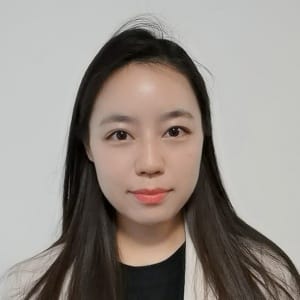 Nanoparticles and Drug Discovery
Nanoparticles and Drug Discovery
Linqing Tian
PhD Candidate, UNSW Sydney
Drug delivery refers to approaches, formulations, and technologies involved in transporting a pharmaceutical compound to its target site to achieve the desired therapeutic effect. The need to deliver a pharmacological dose of a drug to a targeted site with high efficacy is of critical importance for effective and safe disease management, instead of just relying on the drug itself. Drug delivery systems can achieve targeted delivery, controlled drug release, improved drug adsorption and protect the drug from degradation. Since every drug delivery system is designed to target a specific organ, my focus is specifically on the brain. Drugs that target the brain face a higher failure rate compared to drugs targeting other conditions. One well-known issue limiting the efficacy of systemically administered brain drugs is the blood-brain barrier, which blocks the entry of 99% of administered small molecules and biotherapeutics. In light of great challenges, nanoparticles as drug carriers offer a beacon of hope for advancing brain drug delivery due to their versatility for encapsulating various drugs. To deliver a drug to the brain, a key consideration is integrating nanoparticles with brain-targeting capabilities. Additionally, given the tight junctions of the blood-brain barrier, smaller nanoparticles are generally expected to transport more efficiently than larger ones. Therefore, inspired by the self-folded natural proteins that present stable and small structures in the human body, my research focuses on designing biocompatible, small synthetic polymeric nanoparticles incorporating sugars and amino acids as drug carriers to enable efficient drug encapsulation and targeted brain delivery.
Ms Linqing Tian is a third-year PhD student in the School of Chemistry at UNSW Sydney, having previously completed a Master of Environmental Engineering in 2021 at Tsinghua University, and a Bachelor of Water Supply and Drainage Engineering at Zhengzhou University in 2018. Leveraging her extensive expertise in polymer science and computational modelling alongside her innovative approach to nanomedicine, Linqing Tian developed a novel drug delivery system that enhances the delivery of therapeutic drugs without relying on organic solvents. This sustainable system, which uses sugars and amino acids, allows for the formation of nanomedicine in an aqueous environment. It streamlines the process by eliminating the need for multiple steps and enables precise control over nanoparticle size by adjusting the quantity of the added drug. Versatile and easy to adapt, this system is suitable for a wide range of therapeutic drugs.
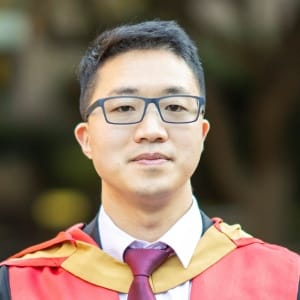 Advances in CRISPR-based Diagnostics
Advances in CRISPR-based Diagnostics
Dr Fei Deng
Early Career Fellow, Cancer Institute of NSW
Originally discovered as an adaptive immune system in bacteria, CRISPR-Cas technology has transformed genome editing and molecular diagnostics. Its ability to recognise specific nucleic acid sequences with high precision has led to the development of rapid, sensitive, and programmable diagnostic tools. CRISPR-based diagnostics utilize enzymes such as Cas12 and Cas13, which target DNA and RNA, respectively. Upon recognizing a specific sequence, these enzymes exhibit collateral cleavage activity, cutting surrounding reporter molecules to generate a detectable signal. Platforms like SHERLOCK and DETECTR have leveraged this mechanism for highly sensitive nucleic acid detection. Additionally, integrating CRISPR with lateral flow assays (LFA) enables rapid, instrument-free disease detection, while pairing it with isothermal amplification (e.g., RPA, LAMP) further enhances sensitivity. Digital CRISPR approaches using microfluidics achieve single-molecule detection for absolute quantification.
A major advancement is the development of a CRISPR-based autocatalytic biosensor, which enables ultrasensitive detection of circulating free DNA (cfDNA) using a minimal plasma sample. This system amplifies detection efficiency without requiring complex preprocessing, making it particularly suitable for liquid biopsy applications. These innovations have facilitated the real-time detection of infectious diseases, cancer biomarkers, and genetic mutations. Future advancements integrating AI, automation, and portable devices will further improve accessibility, affordability, and scalability, enabling decentralized and real-time diagnostics worldwide.
Dr Fei Deng is currently an Early Career Fellow of the Cancer Institute of NSW, having received his PhD degree (Biomedical Engineering) in 2021 from the UNSW Sydney Graduate School of Biomedical Engineering. His research interests include point-of-care biosensing devices, CRISPR biosensing devices, and in vivo biosensing devices. Dr Deng has published over 40 articles in high-impact journals that include Nature Communications and Advanced Functional Materials. In addition, he has secured, either individually or as a chief investigator in a larger team, over $11M in research grants from sources that include Australia’s Economic Accelerator, CRC Projects, NHMRC, and the ARC. His biosensor research has been well recognised by industry, leading to a startup company (Casbio) of which he is a co-founder, and as a research consultant to Avicena Systems.
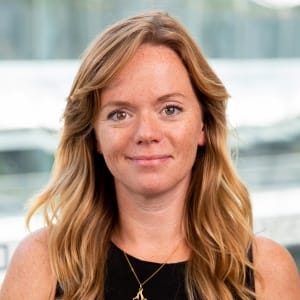 The Coral Diet: Symbiosis, supplements, and survival
The Coral Diet: Symbiosis, supplements, and survival
Dr Jennifer Matthews
Lecturer and Chancellor’s Research Fellow, Climate Change Cluster, University of Technology Sydney
Coral reefs are essential ecosystems with profound ecological, economic, and cultural value. They support approximately 7,000 marine species, contribute billions of dollars to the global economy, provide millions of jobs, protect coastlines, and drive medical advancements, including treatments for Alzheimer’s and cancer. Although the Great Barrier Reef is often seen as Australia’s primary coral stronghold, New South Wales is home to thriving coral gardens that sustain local tourism, fisheries, and unique marine biodiversity. However, climate change is pushing coral reefs toward collapse. Nearly half of the Great Barrier Reef has died in just 27 years, and NSW corals are increasingly vulnerable. In 2016, 60% of NSW corals experienced bleaching due to extreme ocean temperatures, and increasing annual temperatures are enabling invasive species to disrupt marine ecosystems. Without targeted interventions, corals as we know them may not survive this century.
My research focuses on coral health and resilience, with a particular emphasis on nutrition. Corals depend on symbiotic algae for essential nutrients, but when bleaching occurs, they risk starvation. By studying nutrient dynamics, I aim to develop conservation strategies, including diagnostic tools and nutrient supplements, to support coral survival. While not a cure for bleaching, these interventions can help buy reefs critical time as we tackle the larger challenge of climate change.
Dr Jennifer Matthews is a Lecturer and Chancellor’s Research Fellow in the Climate Change Cluster research institute at the University of Technology Sydney. She graduated with a PhD in marine biology from the Victoria University of Wellington NZ in 2021 and holds a research Masters in ecology, evolution and conservations from Imperial College London, and a BSc (Hons) in biology from the University of Bath. Currently, Dr. Matthews is the Deputy Team Leader of the UTS Future Reefs Group. Her research has transformed our understanding of coral nutrition and the physiology of corals in NSW, which is vital for local policy. Collaborating with Traditional Owners, she develops practical solutions to coral ecosystem challenges. With more than 50 invited presentations and 17 awards like the 2023 NSW Tall Poppy Award, her global impact is clear. Jen Matthews has published 32 papers (H-index 14) and has secured 13 grants exceeding AU$3.4M. For her commitment to science communication and mentoring, she was recognised in 2021 as one of the Science Technology Australia Superstars of STEM.
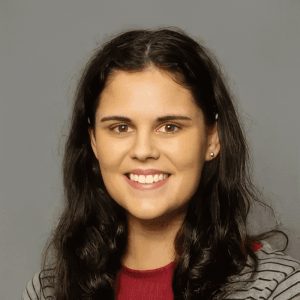 Modifying the immune system one protein at a time
Modifying the immune system one protein at a time
Dr Cynthia Turnbull
Postdoctoral Research Fellow, John Curtin School of Medical Research, Australian National University
The immune system is an intricate network of cells and proteins which works seamlessly to protect the body. Mutations in proteins of the immune system can alter the normal functioning of immune cells and lead to a weaker immune system and the development of diseases such as chronic infection and cancer. Mutations can also cause autoimmunity wherein the immune system attacks the body’s organs and tissues. However, this is not always the case, as an unexpectedly high percentage of individuals with damaging mutations remain completely healthy. I believe this can be explained by the existence of ‘modifier proteins’. These special proteins ‘modify’ the effect of damaging mutations in the immune system by either making them harmless or more harmful. During my PhD, I identified the anti-fungal protein DECTIN-1 as a new modifier of the immune system and found that an undescribed mutation in DECTIN-1 could trigger a very severe form of autoimmune disease. My goal now is to discover more modifier proteins by working with patients with disease and using animal models to mimic human disease states. This will increase our understanding of how the immune system is regulated and provides exciting opportunities for disease treatments, where modifier proteins could be used like little immune system remote controls to combat many different diseases.
Dr Cynthia Turnbull is a postdoctoral researcher at the John Curtin School of Medical Research (JCSMR) of the Australian National University (ANU). Her PhD (2023)with Professor Carola Vinuesa focused on the role of genetic mutations in severe autoimmune disease. She discovered that the anti-fungal protein DECTIN-1 is a regulator of the immune system and can exacerbate the severity of autoimmune disease. Currently, she works in the laboratory of Professor Si Ming Man and studies the role of innate immunity in pro-inflammatory diseases. Her highly collaborative nature and keenness for cross-disciplinary research have resulted in 4 publications in high-impact journals; Nature, Nature Immunology, Science Advances and the Journal of Experimental Medicine, with over 350 citations. Outside of the lab, Cynthia has a passion for teaching and science communication. She has provided guest lectures at ANU, been invited to present at Australian and international research institutes and conferences and has featured in several media articles and radio talk shows.
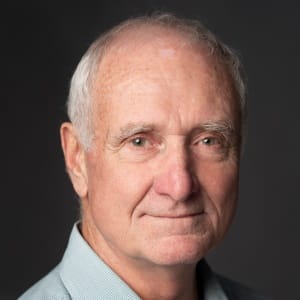 Mr Robyn Williams AO FRSN FAA
Mr Robyn Williams AO FRSN FAA
Science Journalist, Broadcaster, and Presenter of the ABC RN Science Show
Robyn Williams AO FRSN FAA, British/Australian science journalist and broadcaster, will chair the presentation of awards. Over the decades since he hosted Innovations and Investigations from 1974 — The Science Show on ABC Radio National (RN) in 1975, and created Ockham’s Razor in 1984, he has become one of Australia’s best-recognised science communicators. He brings clarity, judgement, and humour to the complexities of scientific research.
| Royal Society of New South Wales | |
| Date: | Wednesday, 05 March 2025, 06:00 PM |
| Venue: | University of Technology Sydney, UTS Central (Building 2) Foyer, Cnr Jones Street and Broadway, Ultimo, NSW |
| Entry: | No charge |
In Person Event
All are Welcome
